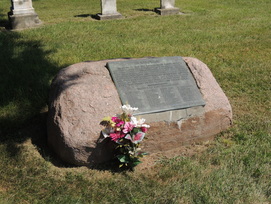 Schweringen monument located in the Sheffield Cemetery. Schweringen monument located in the Sheffield Cemetery. In honor of the 137th Iowa Firefighters Convention being held in Story City this month, I wanted to share an article from the 1940 Story City Herald Anniversary Book about one of the earliest fire related incidents on record in our part of Story County. P.A. Olson included an article from June 2, 1938 in the Anniversary Book on the Schweringen Family monument being dedicated and the tragic story of the family perishing in a prairie fire. In October of 1860 the Schweringen family was traveling by covered wagon from Ohio to take a claim of land near Fort Dodge. When they had come as far as Nevada, they were foot-sore and tired and decided to rest a couple of days. While in Nevada they bought a few household necessities such as cotton batting, cloth, and groceries including lard. When the Schweringen family started out from Nevada, they were happy and thankful they were within a day or so of their future home. The wind was from the southeast and as they were traveling northwest, they considered this in their favor. After traveling a few hours they noticed a hazy condition behind them, but they didn’t pay particular attention to it. Mr. Schweringen did not know of or had never had any experience with prairie fires. When the family came to the southwest corner of section 10 in Milford township the prairie fire overtook them. The wife and three little girls were enveloped in the fire, the flammable cotton and lard burned fiercely. “Mr. Schweringen fought valiantly, but lost against the demon of the prairies.” He crawled to the Hoover home, over a mile away. As soon as the fire had burned out, the few neighbors gathered up the charred remains of the wife and two children and buried them in the Sheffield Cemetery. Within two days Mr. Schweringen died and was buried with his family. The skull of the third child was found the next spring and buried where it was found. The exact spot is not known. In 1938 L.J. Tjernagel headed a project to get a marker placed in the cemetery for the Schweringen family. On May 29, 1938 several hundred people attended the dedication of the monument at the Sheffield Cemetery. A rock was taken from the Henry Jacobs place to serve as a tombstone and a suitable bronze marker was placed upon it. The bronze marker tells a brief description of the tragic deaths of the Schweringen family and lists the names of those who contributed to the monument. This monument can still be seen at the Sheffield Cemetery just southeast of Story City. The Historical Society has recently installed an exhibit on the Story City Fire Department, including a timeline that goes back to 1860 and the Schweringen family. The exhibit is located at the Carriage House Museum which will be open from 12-2:30 pm on Friday and Saturday September 11 & 12 during the Fire Convention. If you would like to see vintage firefighting equipment, uniforms, and learn more about the history of the Story City Fire Dept. please stop by the museum.
0 Comments
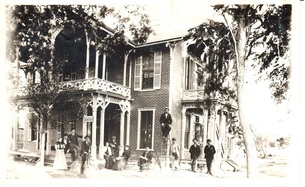 Pictured here is the Allen House hotel which stood where the Story Theatre and City Hall are located today. Pictured here is the Allen House hotel which stood where the Story Theatre and City Hall are located today. P.A. Olson, the editor of the 1940 Story City Herald Anniversary Book, asked several people to write articles about their memories of Story City in the old days. In these articles, the contributors wrote about Story City between 1870-1900. One of my favorite articles was written by Fred Barkhurst and tells of his first impression of Story City. Barkhurst first arrived in Story City on May 23, 1892, on the Des Moines-Sioux City passenger train on the Chicago & Northwestern railway. He was traveling with his brother-in-law W.A. Kelley and their purpose for visiting Story City was to inquire about purchasing the newspaper. Barkhurst’s hometown was Altoona, whose population at the time was 326. Des Moines, the only other town with which he was familiar, had a population of 35,000. By comparison, Story City’s population in 1890 was 536 and by the 1900 census had more than doubled to 1,197. During their journey north, the train had stopped in Polk City and Ames, neither of which Barkhurst was enthusiastic about. Being only familiar with Altoona and Des Moines, when Barkhurst arrived in Story City, he was excited to see what this town had to offer. He was surprised to learn that Story City had a drayline and two hotels. “A drayline and two hotels – Story City must be some town! You see, Altoona hadn’t any drayline–the hotel boy lugged the luggage to and fro–and only one stopping place for man and beast. I realized that I had come to a metropolis.” Barkhurst and Kelley had lunch at the Allen House, one of the two hotels. Later that day Kelley bought the Herald newspaper and according to Barkhurst, “I am sure my brother-in-law never regretted having been the fortunate purchaser of the property. It was the means of our becoming residents of what truly was, has been, and always remains a good town.” Barkhurst goes on in his article to describe the various businesses in Story City at the time. “There were two banks, with T.T. Henryson heading one a John Swan the president of the other. E.L. Ericson operated a lumberyard. Boyd and Henderson had the hardware store–a big one, too. S.R. Corneliussen & Company owned the large general merchandise store, Halleland & Hill had a stock of dry goods, Henryson & Jensen owned an exclusive shoe store, and the Donhowe Bros. handled clothing. A.N. Torp was the photographer, and because housing was hard to get, we found temporary residence in an apartment in the second story of his studio –our newspaper office being next door. T.J. Moses had a meat market. D.A. Darrow had a general store too, and W.D. Gandrup was the druggist –assisted in his pharmacy by his three sons, William, Amiel, and Arthur. Dr. C.W. Allen was a physician, and there was a Dr. Haetlesaetter too. E.W. Harrington was Northwestern agent, and John Egenes directed affairs at the Iowa Central depot. J.A. Wellington was principal of the schools, his wife being also on the teaching staff. If I am not mistaken, there were three other teachers. I look now at the list of names making up the faculty of the Story City public school system and wonder if I am dreaming! No, I was right in the old days –Story City is a good town!” 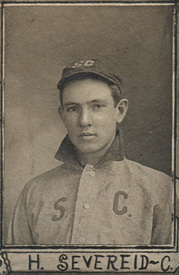 Hank Severeid 1907 Hank Severeid 1907 As I mentioned in my last article, P.A. Olson, the editor of the 1940 Story City Herald Anniversary Book included quite a few articles about baseball. The section on baseball wouldn’t be complete without an article about Story City’s most famous baseball player Hank Severeid. And who better to write the article than Hank himself. Olson included an article that had been written by Hank a few years before 1940. Even though Olson titled Hank’s article “Hank Severeid Tells of Rise from Amateur Ranks to Big Leagues” in the Anniversary Book, I believe the theme of the article is more about Hank’s love for the game and the town in which he grew up. Hank begins the article by talking about his first recollection of baseball when the ball grounds were in Marvick’s pasture just west of the Northwestern depot. He recalls a game between Story City and Roland in which the umpire turned to watch a player attempting to steal a base and the ump got hit in the back of the head with the ball. From an early age Hank learned the lesson “always keep your eye on the ball”. Hank was about eight years old and the water boy at the time. By the time that Hank was getting big enough to play “funny man” for the team, the games were played down in the park. According to Hank, the “funny man” was a player who was not good enough to play any position so they let him play anywhere when they were in need of players. Hank needed a uniform, so he bribed his good friend Bert Hill to give him the red uniform he had. Hank had worn many uniforms over the years but he always considered that red one the “honey” of them all. The first Story City team Hank play on included the following players, Bert Hill, Oscar, Chris and Charley Severeid, Hank Jacobson, Carl and Tom Clayberg, Severin Hill, Ira Brattebo, Sig Fraland, with George Kramme as manager and Charley Bartlett as scorer. As he continued on with the team, Hank played on third base and in the outfield regularly. One day when they played Roland, the catcher didn’t show up so Hank tried catching and stuck with that. “You know they say all a catcher needs is a strong back and a weak mind, and sometimes one feels they are right; but seriously, if I had to choose, I would still choose catching, because it’s the most interesting of all positions.” After a couple of years with the Story City team, Hank was hired by the Nevada team. This was the first ball club on which he played every day. After Nevada Hank played with Charles City for a few weeks then went to Burlington of the Central Association in the latter half of 1909. According to Hank, the first professional game he ever saw he played in, which was Burlington against Quincy. Hank went on to play for Ottumwa in 1910 and the following year on May 15, 1911 he made his major league debut with the Cincinnati Reds. During his major league career, Hank also played for the St. Louis Browns, the Washington Senators, and the New York Yankees. To close, I’ll share this section of Hank’s article that shows his love for the game and his hometown. “Many things have happened since we took part in those games at the park, and while it may be a long jump from playing with the Claybergs, Hills, Knudsons, Petersons, Jacobsons, Boyds, Nordskogs and others to playing with Ruth, Johnson, Sisler, Williams, Peckinpaugh, and other major league players, but for sheer joy and pleasure it would be hard to beat the kid day games, and a victory in a World Series game was no sweeter than a 1 to 0 victory over Maxwell.” 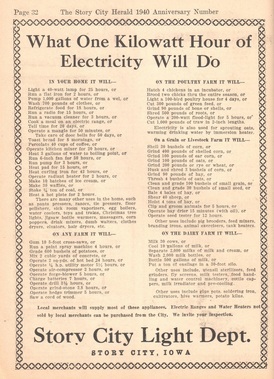 This week we are featuring a unique advertisement from the Story City Light Department. The ad tells you several options for what one kilowatt hour of electricity will do in your home or on your farm. The Light Plant building was constructed in 1919. Below are photos of the Light Plant from the 1931 Story City Golden Jubilee Book.
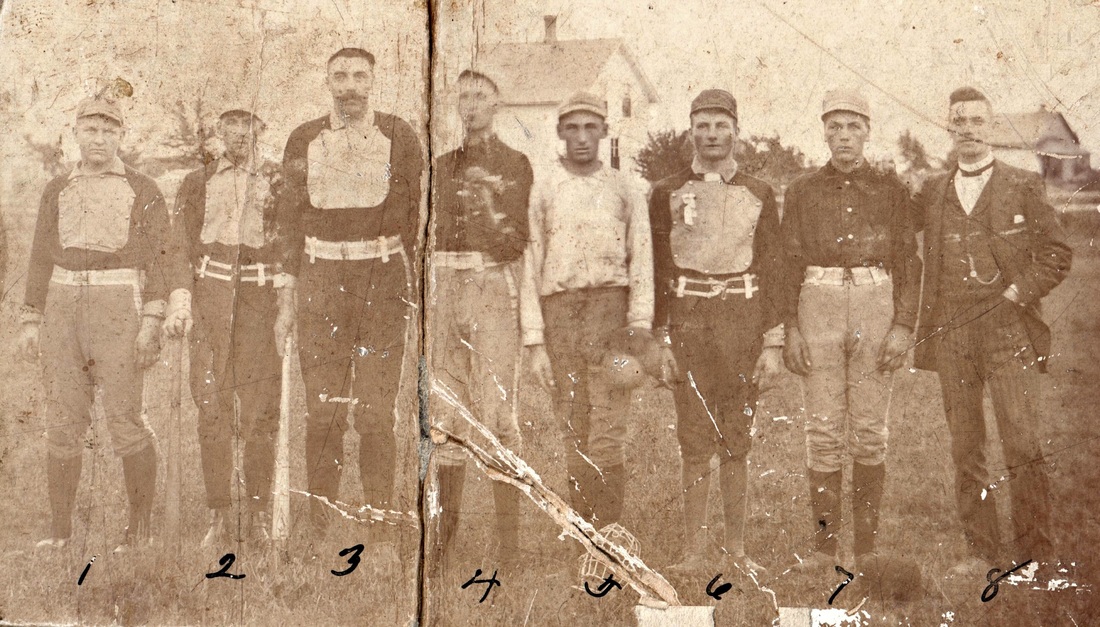 The team of the 1890s was nicknamed the Story City Giants on account of their abilities and size. Freeman Fuller (#3) was 6' 4" tall and 3 others were over 6 ft. The team of the 1890s was nicknamed the Story City Giants on account of their abilities and size. Freeman Fuller (#3) was 6' 4" tall and 3 others were over 6 ft. In the introduction pages of the 1940 Story City Herald Anniversary Book, the editor P.A. Olson, wrote a short description about the baseball era. “Anyone who reads this Anniversary Number may be struck with the fact that there is quite a lot in it about baseball. You couldn’t write a history of Story City without saying a good deal about the great American game.” Olson included several articles about baseball written by Andrae B. Nordskog, Rasmus C. Severeid (Hank Severeid’s older brother), and W.A. Kelley. The themes of these articles included the success of the Story City team and information about the town’s greatest players. Nordskog, who lived in California in 1940, wrote about his old home town of Story City and how baseball was a red-hot sport. In the 1890s and 1900s Story City’s baseball team was the team to beat. During an eleven year period, the Story City team lost only one game to the Ames college team. Beating the Iowa State College team was a theme in all of the articles on early baseball. Rasmus C. Severeid in his article wrote “how well do I remember the smart geeks down at the I.S.C. more than once nearly bit off one other’s noses in a fit of frenzy over a bad defeat at the hands of the despised ‘Norskies’.” Another theme that spanned all three articles was that Pete Peterson was the best pitcher Story City ever produced. Nordskog, in his article recounts how he taught Peterson his curve ball. Nordskog was pitching in Randall in 1903 when Peterson’s team came to play. Nordskog struck Pete out three times. After the game Pete asked Nordskog to show him how to throw that curve ball. According to Nordskog, he gave Pete the secret for an “out-curve riser” and Pete used it with more success than he did because Pete was much stronger and faster. W.A. Kelley wrote about Pete’s successes in his article. In one season Pete won 25 games, lost one, and two were ties. Of the 25 victories, 11 were shutouts. I have to share one of my favorite descriptions of a player from Ramus C. Severeid’s article, he was writing about Freeman Fuller. “Fuller is the only player I ever saw who could bat a ball gripping the large end of the bat seemingly as well as the small end. No pitcher of those days had anymore show of executing a strike out on him than a dog with tallow legs chasing an asbestos cat thru a prairie fire.” The other theme that was consistent throughout the articles, which were written by former players, was that the “old timers” of the 1890s and early 1900s never lost their love for the game. Kelley and Severeid’s articles were originally written in 1914. They were ready to gather their teammates of 10-20 years ago and show the youngsters of 1914 a thing or two. I hope you have enjoyed this glimpse of early baseball in Story City. These articles were written by players of the era prior to Hank Severeid (Story City’s most famous baseball player.) Hank will be featured in next month’s Herald article. 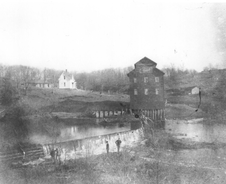 Circa 1870's view of Soper's Mill a long the Skunk River. Circa 1870's view of Soper's Mill a long the Skunk River. Included in the 1940 Story City Herald Anniversary Book was an article written in 1906 by Charles Hill Keigley about the old Soper’s Mill. The mill was a pioneer landmark in Story County. Soper’s Mill was located on the south bank of the Skunk River about seven miles south of Story City. There are differing historical accounts as to who originally built a mill on that land. Some believe it was Thomas Hughes that built a saw mill in 1856. In Charles Hill Keigley’s article from 1906, he describes T.K. Soper, who was one of the earliest residents in Story County, as the one who built a saw mill in the 1850s. During the fall of 1859, Soper tore down the saw mill and in its place he began building a grist mill. This grist mill is what became known throughout the county as Soper’s Mill. J.G. Yelton was the first miller to be in charge of the mill. Mr. Yelton ran the mill for nine years and the machinery continued daily to grind out large quantities of buckwheat meal and flour. Grain was brought to the mill by settlers from surrounding counties. It was not uncommon for farmers to come a distance of 30 or 40 miles to Soper’s Mill. In the summer of 1871, the mill changed hands and was conducted by Hipshear & Egelberger. It is said that at this time they equipped the mill with new machinery and began manufacturing a special brand of buckwheat flour which was known as “Soper’s Superlative.” The mill was very successful under Hipshear & Egelberger and was run at its full capacity day and night. In the spring of 1882, Jimmie Noble took possession of the mill and the success of the mill continued. Rye and buckwheat were the principal products at this time. According to Keigley, “We are informed that buckwheat flour was then sold by Mr. Noble for $4.00 per hundredweight, and the daily output then was scarcely equal to the demand.” Noble operated the mill until 1894 when it was purchased by P.J. Swearinger. Swearinger partially reconstructed the old mill but by the 1890s the water supply had given out and there was insufficient power to run the machinery, except at certain seasons. Soper’s Mill fell into disuse in the late 1890s. In the following years the area became popular for fishing, picnics, and celebrations. Today, Soper’s Mill is an access point for canoeing along the Skunk River Greenbelt. We hope you have enjoyed this history of a local pioneer landmark. 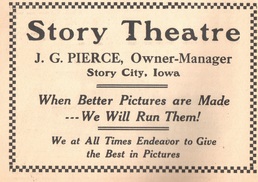 This week we are featuring an advertisement from the Story Theatre. The historic Story Theatre/Grand Opera House, built in 1913, was part of Story City's Grand Hotel and Auditorium Building. Motion pictures, school plays, graduation exercises, and vaudeville acts were presented in the original theatre. The theatre opened for business on December 18, 1913, with the melodrama stage play "The Two Orphans", complete with an orchestra. The Story Theatre/Grand Opera House has had only 14 owners in its long history, from initial owner Iver Egenes to Lewis and Mae Peterson and sons, Richard and Virgil, who operated the theatre for nearly 40 years from 1947 to 1984. In January of 1980, the hotel and theatre block was placed on the National Register of Historic Places. The Story Theatre/Grand Opera House is the oldest continually running theatre in Iowa. It celebrated it's 100th anniversary in 2013. 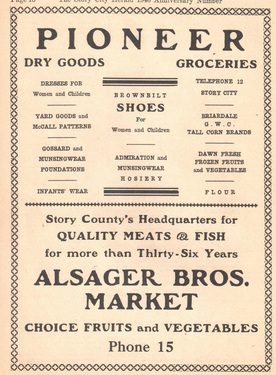 The third advertisement we will be featuring from the 1940 Story City Herald Anniversary Number book is a joint ad from the Pioneer Store Co. and Alsager Bros. Meat Market. The Pioneer Store was located at 604 Broad St, on the south-east corner of Broad and Penn Ave. Norsemen Reality is located there today. In the early 1900s, this location was owned and operated by S.R. Corneliussen. In 1911, Corneliussen sold his store to A.G. Larson, J.C. Johnson, Martin Jorgenson, Herman Jorgenson, and J.A.B. Larson. The store name was changed to the Pioneer Store Company. As you can see in the photo below, the Alsager Bros. Meat Market occupied the east end of the building at 608 Broad St. Reliance State Bank is located there today. The Alsager Bros. Meat Market was in business until 1946. Alsager’s had a reputation as the best meat market in the county. Even people from Ames would drive to Story City to buy their meat there. 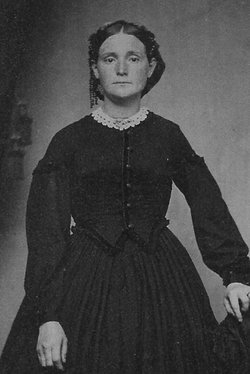 Charlotte Wellington Wier 1839-1928 Charlotte Wellington Wier 1839-1928 Two articles were included in the 1940 Story City Herald Anniversary Book about pioneer women, describing these women as the backbone of pioneer life. Pioneer women led a hard life of long hours, hard work, and few conveniences. One of these articles was written by Nehemias Tjernagel, who was an author, composer, and world traveler. He wrote examples of several local pioneer women, who along with their daily duties would help the sick since medical assistance was not readily available in these early days. These women included Mrs. Kittel Knutson, who freely gave her services to the sick, diagnosing cases as if by intuition. Mrs. Christian Karolussen, an intelligent woman with a helpful spirit, “helped usher into the world many of our present citizens.” Mrs. Haaver Thompson was well known for her hospitable attitude towards children. Besides caring for her own children, she took in several other children who lost their parents. Nehemias also wrote of Charlotte Wier, the wife of Captain Wier, who came to Lafayette Township in 1856. She is remembered for waiting on traveling families for days and days. Sometimes she would take in so many travelers that they would lie strewn around on the floor at night and she would have to step over them in the morning when getting breakfast ready. No one was turned away. Charlotte had “experienced the hardships of travel and knew what a friendly welcome meant.” The other article in the book described a young pioneering couple just starting out. The first year they could not afford to employ a hired man, which meant they milked 14 cows and fed the calves by hand every day. The household facilities were not the best; the living room adjoining the kitchen was used as the family sleeping room. House cleaning included white-washing the walls, scouring the unpainted woodwork, washing windows and bed clothes, emptying, washing and refilling the straw bed ticks, taking up the rag carpet, beating the dust out of it, scrubbing the floor, and putting the carpet down again with fresh straw underneath. If the rag carpet needed to be washed, it was ripped apart and washed on the washboard one strip at a time. It’s hard to imagine this carpet cleaning process with the multiple vacuums and carpet cleaners available today. We hope you have enjoyed this brief overview of the lives of early pioneer women in the area. 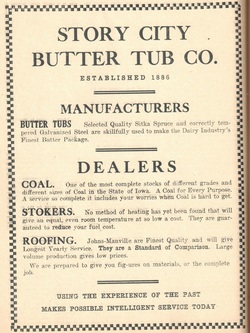 The second advertisement we will be featuring from the 1940 Story City Herald Anniversary Number book is from the Story City Butter Tub Company. The Butter Tub Company was a family owned business in Story City for 85 years. In 1883 Hactor Hill came to America, making his home for short time at his uncle's folks, Bor Enge, at Roland, Iowa. Not long after his arrival to this country he started work at Mr. Thompson's cooper shop in Ames. This shop was moved to Story City in 1887. When Mr. Thompson in 1891 sold his business, the Hill family bought it. Hactor Hill was in the cooper business for 42 years until his death in 1933. Hactor's sons and grandsons owned and operated the Story City Butter Tub Co until a tornado hit Story City in 1976. The building was demolished in the storm. At that time it was the oldest building in Story City. As you can see from the 1940 ad, the Butter Tub Co. was not only producing quality butter tubs, they also sold coal, stokers, and specialized in roofing. The company specialized in roofing for many years. In fact, Hactor's great grandson, Paul Hill, is currently in the roofing business in Story City. |
AuthorKate Feil Archives
February 2023
Categories
All
|
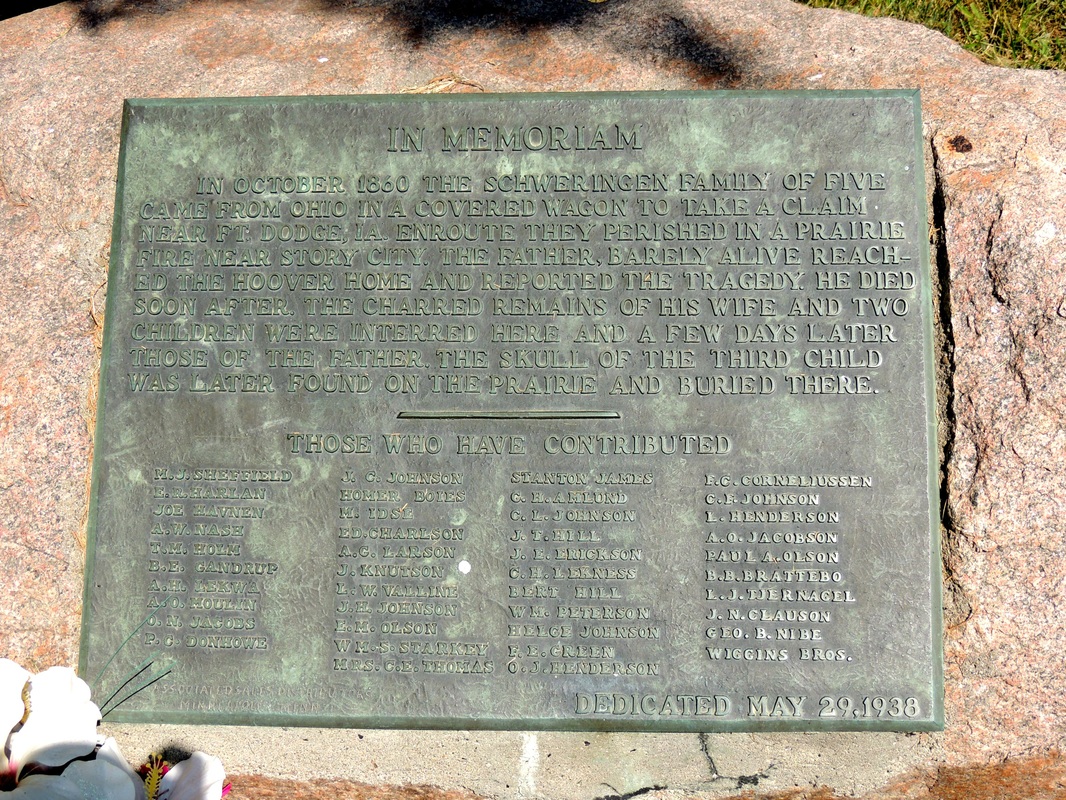
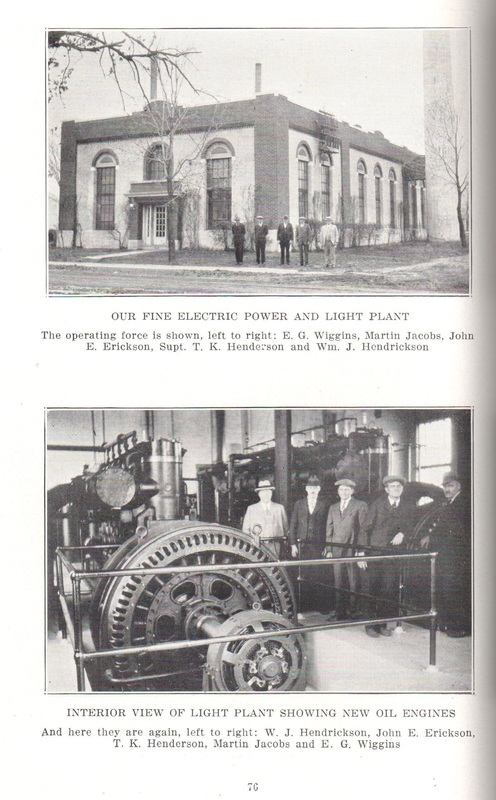
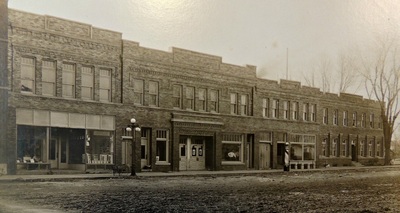
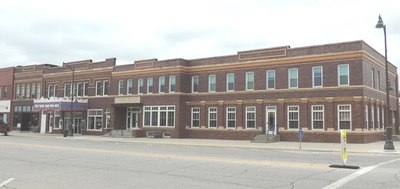

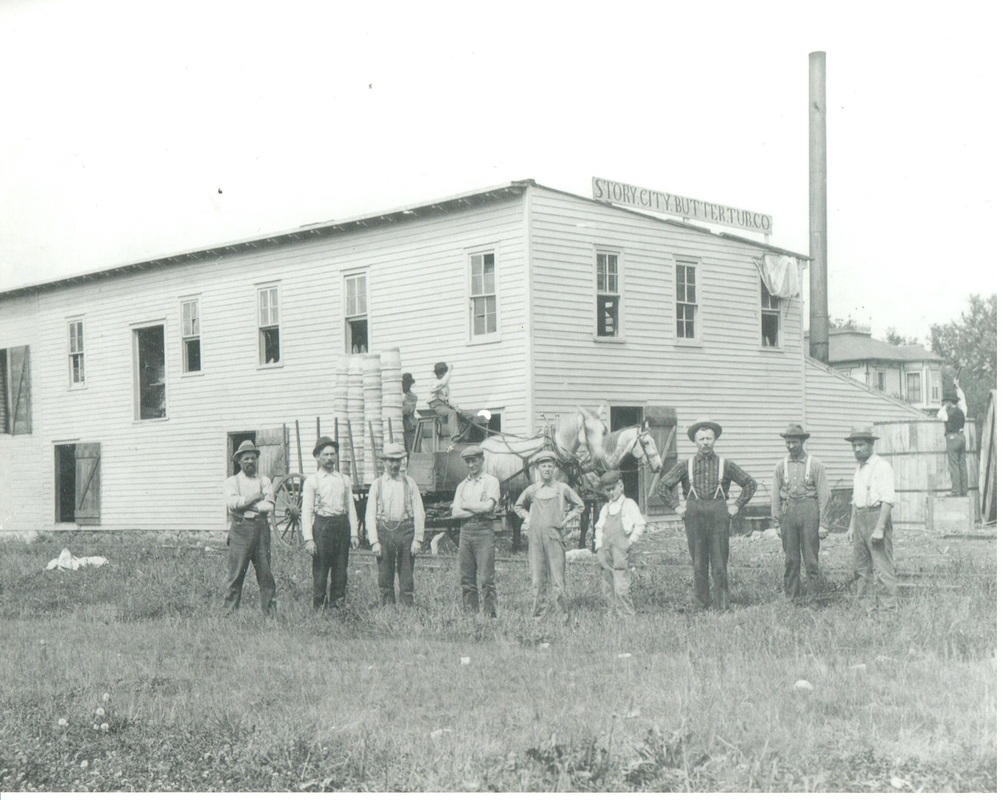
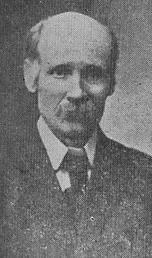
 RSS Feed
RSS Feed
